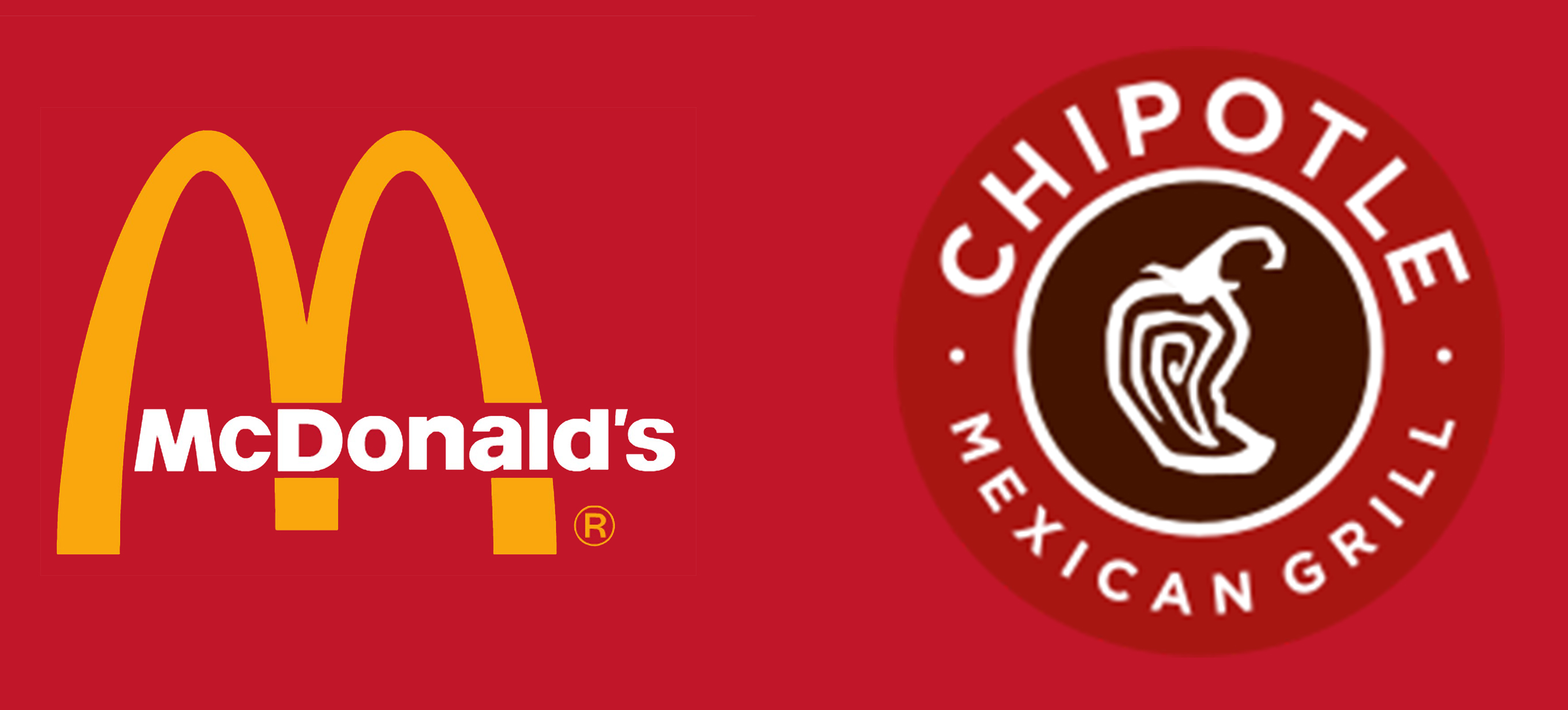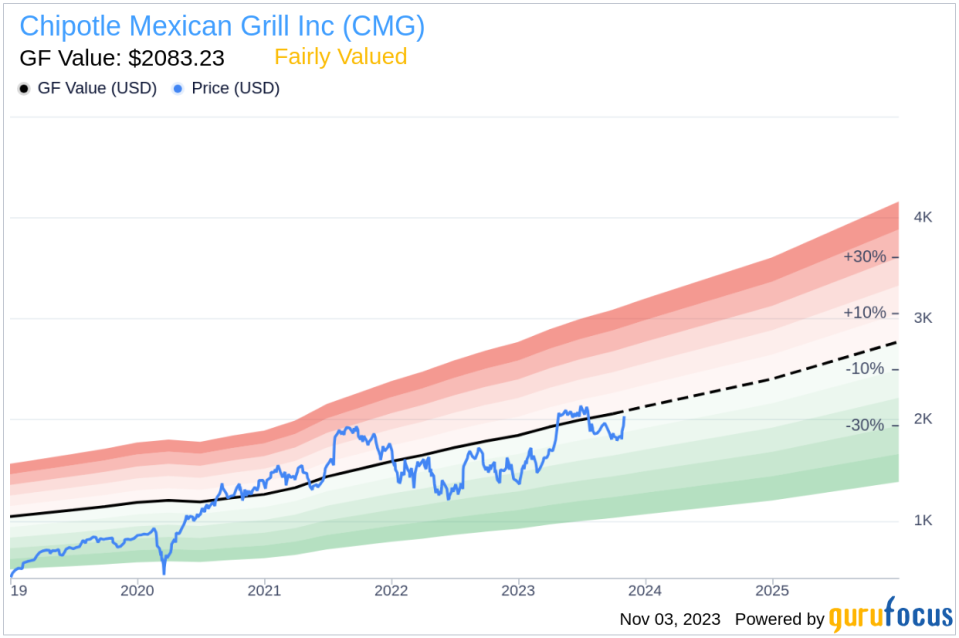Chipotle’s Financial Performance

Chipotle Mexican Grill, a leading fast-casual restaurant chain, has consistently delivered strong financial performance over the past several years, driven by its commitment to high-quality ingredients, customizable menu, and a focus on digital ordering and delivery.
Revenue Growth
Chipotle’s revenue has experienced substantial growth over the past five years, demonstrating the company’s ability to expand its customer base and attract repeat business. Several key factors have contributed to this growth:
- New Restaurant Openings: Chipotle has consistently opened new restaurants, expanding its geographic reach and increasing its potential customer base.
- Menu Innovation: The introduction of new menu items, such as cauliflower rice and plant-based chorizo, has attracted new customers and expanded the company’s appeal to a wider range of dietary preferences.
- Digital Ordering and Delivery: Chipotle has embraced digital ordering and delivery platforms, making it easier for customers to place orders and receive their meals conveniently. This has contributed to increased sales, particularly during the COVID-19 pandemic.
- Price Increases: Chipotle has implemented price increases to offset rising costs of ingredients and labor, which has contributed to revenue growth.
Profit Margins
Chipotle’s profit margins have generally been higher than its competitors in the fast-casual restaurant industry, reflecting its focus on high-quality ingredients and its ability to control costs.
- Operating Margin: Chipotle’s operating margin, which measures profitability before interest and taxes, has consistently been above 10%, significantly higher than the industry average.
- Net Margin: Chipotle’s net margin, which measures profitability after all expenses, has also been above average, demonstrating its ability to generate strong returns for shareholders.
Cost Drivers
Chipotle’s major cost drivers include:
- Food Costs: Chipotle’s focus on using fresh, high-quality ingredients contributes to higher food costs, which represent a significant portion of its expenses.
- Labor Costs: Chipotle’s commitment to paying its employees competitive wages and offering benefits contributes to higher labor costs.
- Rent and Occupancy Costs: Chipotle’s restaurant locations are typically located in high-traffic areas, which can lead to higher rent and occupancy costs.
These cost drivers can impact profitability, and Chipotle has implemented strategies to mitigate their impact, such as negotiating favorable lease terms and optimizing its supply chain.
Debt Levels and Financial Obligations
Chipotle’s debt levels have been relatively low, indicating a strong financial position and its ability to manage its financial obligations.
- Debt-to-Equity Ratio: Chipotle’s debt-to-equity ratio has been below 0.5, suggesting a conservative approach to financing its operations.
- Interest Coverage Ratio: Chipotle’s interest coverage ratio, which measures its ability to cover its interest expense, has consistently been above 10, indicating its strong ability to meet its debt obligations.
Chipotle’s financial performance has been driven by its focus on high-quality ingredients, its commitment to customer experience, and its effective cost management strategies.
Chipotle’s Operational Efficiency
Chipotle’s operational efficiency is a key driver of its success, enabling the company to deliver consistent quality and profitability. This section delves into the various aspects of Chipotle’s operations, including its restaurant expansion strategy, supply chain management, technology integration, and labor costs.
Restaurant Expansion Strategy
Chipotle’s restaurant expansion strategy has been a key factor in its growth. The company has focused on opening new restaurants in high-traffic areas with strong demographics. This strategy has helped Chipotle to increase its sales and market share. However, Chipotle has also been careful to avoid over-saturating any particular market. The company’s approach has been to carefully select locations and ensure that each new restaurant is strategically positioned to succeed.
Supply Chain Management
Chipotle’s supply chain management is another important factor in its operational efficiency. The company has built a vertically integrated supply chain that gives it greater control over the quality and sourcing of its ingredients. Chipotle’s commitment to using fresh, high-quality ingredients is a key differentiator for the company.
Sourcing Practices
Chipotle sources its ingredients from a network of farms and suppliers that meet its strict quality standards. The company has a team of dedicated sourcing specialists who work with suppliers to ensure that ingredients are grown and raised in a sustainable and humane manner. Chipotle’s sourcing practices have been recognized by several organizations, including the Humane Society of the United States.
Food Safety Protocols
Chipotle has a strong focus on food safety. The company has implemented rigorous food safety protocols that are designed to prevent foodborne illnesses. These protocols include comprehensive training for employees, regular inspections of its restaurants, and strict adherence to industry best practices.
Technology in Operations
Chipotle has embraced technology to improve its operational efficiency and enhance the customer experience.
Digital Ordering and Delivery
Chipotle has invested heavily in its digital ordering and delivery capabilities. The company’s mobile app and online ordering platform allow customers to place orders quickly and easily. Chipotle also partners with third-party delivery services to provide customers with convenient delivery options.
Labor Costs
Chipotle’s labor costs are a significant expense for the company. The company has been working to improve its labor efficiency by implementing new technologies and streamlining its operations.
Labor Cost Comparison
Chipotle’s labor costs are generally higher than those of its competitors. This is due in part to the company’s commitment to paying its employees a higher minimum wage. Chipotle also offers its employees a range of benefits, including health insurance and paid time off.
Potential Areas for Improvement
Chipotle could potentially improve its labor efficiency by further automating tasks and streamlining its operations. The company could also explore ways to reduce employee turnover, which can be costly.
Chipotle’s Competitive Landscape: Chipotle Stock
Chipotle Mexican Grill operates in a highly competitive fast-casual restaurant industry, facing numerous rivals vying for customer attention and market share. Understanding Chipotle’s competitive landscape is crucial to assessing its future prospects and potential for growth.
Chipotle’s Main Competitors, Chipotle stock
The fast-casual restaurant industry is characterized by a diverse array of competitors, each with unique strengths and weaknesses. Chipotle’s main competitors include:
- QDOBA Mexican Eats: QDOBA is a close competitor to Chipotle, offering a similar menu of customizable burritos, bowls, and tacos. It has a strong presence in the US, particularly in the Southwest, and has been expanding its footprint. QDOBA’s strength lies in its diverse menu options, including more vegetarian and vegan choices. However, it faces challenges in maintaining consistency across its locations and its brand image is less premium than Chipotle’s.
- Moe’s Southwest Grill: Moe’s Southwest Grill is another major competitor, known for its customizable burritos and “build your own” approach. Moe’s has a strong presence in the Southeast and is expanding its reach. Its strength lies in its value proposition, offering affordable and customizable meals. However, Moe’s faces challenges in maintaining brand consistency and differentiating itself from other competitors in the crowded fast-casual market.
- Panera Bread: Panera Bread is a more diversified competitor, offering a broader menu of soups, salads, sandwiches, and baked goods. It has a strong brand image and a loyal customer base. Panera’s strength lies in its focus on fresh ingredients and its commitment to providing a comfortable and inviting dining experience. However, Panera faces challenges in maintaining its premium pricing strategy in a competitive market and in keeping up with evolving consumer preferences.
- Subway: Subway is a global fast-food chain known for its customizable sandwiches and salads. Subway has a vast network of locations and a strong brand recognition. Its strength lies in its affordability and its ability to cater to diverse dietary needs. However, Subway faces challenges in maintaining its brand image as a healthy option and in competing with newer, more innovative fast-casual concepts.
- Shake Shack: Shake Shack is a fast-casual chain known for its burgers, fries, and milkshakes. Shake Shack has a strong brand image and a loyal customer base. Its strength lies in its focus on quality ingredients and its commitment to providing a unique and memorable dining experience. However, Shake Shack faces challenges in maintaining its premium pricing strategy and in expanding its reach without compromising its brand identity.
Chipotle’s Competitive Advantages
Chipotle has several competitive advantages that have helped it establish a strong position in the fast-casual restaurant industry:
- Focus on Fresh Ingredients: Chipotle’s commitment to using fresh, high-quality ingredients is a key differentiator. The company sources its ingredients from local and regional suppliers whenever possible, emphasizing sustainability and ethical sourcing practices. This approach resonates with health-conscious consumers who are increasingly seeking fresh and wholesome food options.
- Brand Image: Chipotle has cultivated a strong brand image as a purveyor of high-quality, customizable, and fast-casual Mexican food. The company’s focus on sustainability, ethical sourcing, and fresh ingredients has contributed to its positive brand perception. This image has allowed Chipotle to command premium pricing for its products and attract a loyal customer base.
- Customization: Chipotle’s “build your own” approach allows customers to customize their meals to their liking. This provides a high level of personalization and control over the dining experience, appealing to consumers who value choice and flexibility.
- Strong Digital Presence: Chipotle has a robust digital presence, with a user-friendly website and mobile app that allow customers to order online, pay digitally, and track their orders. This digital strategy has helped Chipotle cater to a tech-savvy customer base and expand its reach beyond traditional brick-and-mortar locations.
Impact of Emerging Trends
Emerging trends in the food industry, such as plant-based diets and delivery services, are presenting both opportunities and challenges for Chipotle:
- Plant-Based Diets: The growing popularity of plant-based diets has created a significant opportunity for Chipotle to expand its menu offerings. The company has already introduced plant-based options, such as its vegan chorizo, and is likely to continue exploring new plant-based ingredients and dishes. This trend could attract a new customer segment and contribute to Chipotle’s growth.
- Delivery Services: The rise of food delivery services has created a new channel for Chipotle to reach customers. The company has partnered with major delivery platforms, such as Uber Eats and DoorDash, to offer its menu through these services. This strategy has expanded Chipotle’s reach and convenience, attracting customers who prefer to order food online and have it delivered.
Chipotle’s SWOT Analysis
A SWOT analysis is a valuable tool for understanding a company’s internal strengths and weaknesses, as well as external opportunities and threats. Here is a SWOT analysis of Chipotle:
- Strengths:
- Focus on fresh ingredients and sustainability
- Strong brand image and customer loyalty
- Customization and flexibility in menu options
- Robust digital presence and online ordering capabilities
- Efficient supply chain and operational excellence
- Weaknesses:
- Higher prices compared to some competitors
- Limited menu options compared to some competitors
- Challenges in maintaining consistency across locations
- Vulnerability to food safety concerns and negative publicity
- Limited international presence
- Opportunities:
- Expanding into new markets, both domestically and internationally
- Introducing new menu items, including plant-based options
- Leveraging technology to enhance customer experience and efficiency
- Partnering with other brands to offer complementary products and services
- Capitalizing on the growing demand for healthy and sustainable food options
- Threats:
- Increasing competition from other fast-casual restaurants
- Rising food costs and supply chain disruptions
- Negative publicity and food safety concerns
- Economic downturn and changes in consumer spending patterns
- Changing consumer preferences and dietary trends
Chipotle stock has been on a rollercoaster ride lately, with investors wondering if they should hold on for dear life or jump ship. Perhaps they should take a cue from the CEO of Starbucks , who has weathered many a storm in the coffee world.
After all, if Starbucks can survive the “Grande” challenges of the market, surely Chipotle can too, right?

